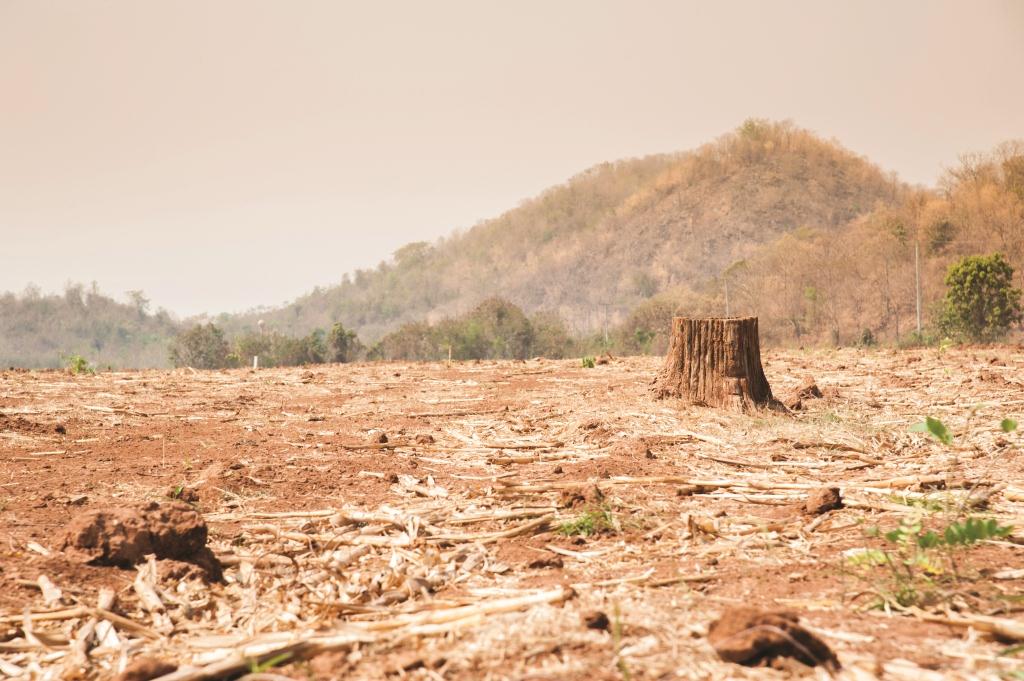Four years of drought and South Africa is counting the costs on the farms. It is tougher than most for hundreds of struggling sugarcane farmers in KwaZulu-Natal who lost everything last year and fear the same this year.
Fifty-year-old Thembelihle Mzila grew up near Wartburg, 40 kilometers from Pietermaritzburg in KwaZulu-Natal. All she wanted, like her parents, was to own a sugarcane field. For more than 20 years, she has lived that dream. All these years, Mzila has worked long hours to feed her children and has build her house.

“I have learned to use my own hands at a young age. I know how to use my hands, it is something I was born into, I never begged,” says Mzila, pointing to her sugarcane field stretching downhill near her homestead. When FORBES AFRICA met Mzila, the sky over the rural town of Wartburg was grey and the clouds were heavy. It rained when we left but not enough to make up for the four years of drought.
Mzila’s childhood dream is slowly running dry. Since drought struck a few years ago, there is little to harvest, forcing Mzila to look for other income while she prays for rain. Last year, KwaZulu-Natal was the first of five provinces declared drought disaster areas by the government. Early this year, the government announced a R15-billion ($955 million) bailout through loans, but Mzila and her 95 associates won’t qualify for it. They don’t have collateral. While she waits for rain, she is selling soft drinks and snacks to keep her children at school.
Loading...
Mzila is the chairperson of the Inzwakele Co-operative Group, formed in 2011, that meets once a month. There are 95 members, who plough a field the size of a football field. Most are pensioners, unemployed and single parents. Besides solely depending on rain for ploughing, there are many other problems. They use their annual financial support from government to hire agricultural instruments and repair fences broken down by cattle.
It takes up to two years for a sugarcane harvest. Many are despondent as well as dry.
“Because of climate change, and its unpredictable weather, we find it difficult now to know exactly which months are good for ploughing the fields. Habitually we start in August and through to the end of January, but there was no rain last year, as a result the fields dried up and went hungry with no money,” says Mzila.
“Unemployment is very high here. Many people turn to farming for income. Though we have so many members, we still have a challenge to assist each and every one getting started with their own fields. We have many in the waiting list because we hire tractors and tools. We have a roster that we keep,” says Bongani Shangase, a 75-year-old former bus driver who now farms sugarcane.

Young children collect water from a spring in Kimaswa Western Kenya Wednesday, Sept. 30, 2015. 375 schools in Cheptai and throughout Western Kenya are currently being given Lifestraw Water Filters to ensure that every child at school has clean water to drink. Jaguar Landrover are supporting the project being run in partnership with Vestergaard and Climate Care and employees form Jaguar Landrover are currently visiting the schools to assist with distribution. ( Photo/KATE HOLT)
“As the small cooperation farmers, we get advice or recommendation from the ‘mill’ as to what kind of sugarcane seed we should be planting at the given time. Based on the soil test done by Illovo representatives on our land, we were given sugarcane N12 and N48 seed to plant. Those of us who ploughed in 2012 have started selling sugarcane to Illovo.”
Mfanufikile Mbatha, 52, is another member who has yet to see his first crop. He’s a shopkeeper as well.
“We worked separately on our own gardens, ploughing vegetables for ourselves and selling when the product was good. But when the local officials approached us to organize ourselves, we came up with the cooperation in 2012. The thing that boosted our confidence was the government grant, although at times we received money a little late into the ploughing season, we are grateful for it,” he says.
They’d be even more grateful for a few weeks of torrential rain.
Loading...
